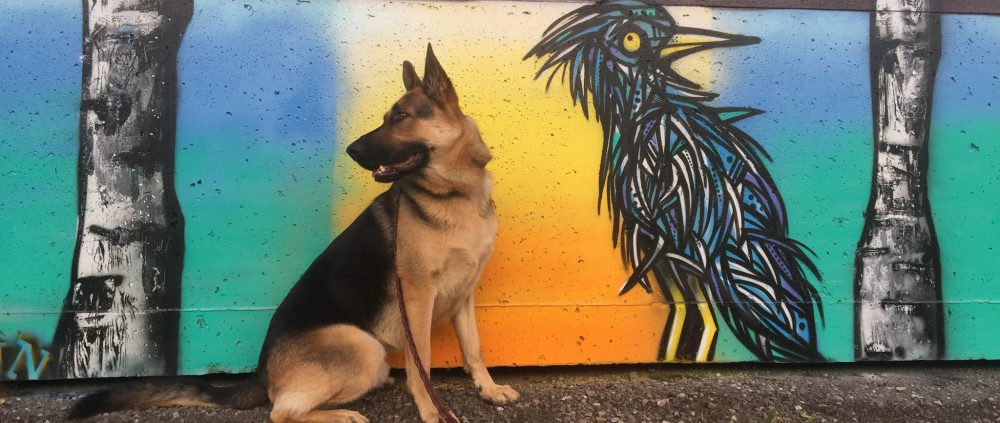Note: This is part two of a two-part post. Click here to read part one.
Now.
A couple of months ago I signed Milo and me up for a research project investigating canine fear and aggression in veterinary settings. I jumped into this survey eagerly, sure that Milo’s jackassery would provide them with some interesting data. They wanted to know about dogs acting out, and boy could tell them about a dog acting out.
I don’t think I was ever so pleased to be so disappointed about an experiment. You see, the survey questions all had a time index.
What sorts of fear behaviour did Milo exhibit at his last vet visit? None.
During that visit did he show any aggressive behaviours when:
- Getting weighed? No.
- Touched? No.
- Vaccinated? No.
- Having his ears examined? No.
- Having blood drawn? No.
- Having his temperature taken? OK, Yes. He growled at the vet tech when she tried to stick a thermometer up his bum. Fair enough. We didn’t get a temperature that day.
If those questions were about my worst vet visit or any vet visit three years ago, the answers would have been different. When I sat down to take this survey, I was ready to give those three-year-old answers. But, in the last three years Milo, and I, have changed. He’s a more confident dog. I’m a calmer person. And we’re a stronger team.
I caught myself living in the past again when Milo and I were camping at Killbear Provincial Park. Our campsite was beside what must have been an intergenerational, extended family camping trip. There were at least seven children under the age of five, they yelled a lot, and all of them, except the newborn, seemed to think that running while yelling was the thing to do.
Screaming creatures darting around—the kind of game that Milo was always keen to join, except that he weighed more than any three of those kids combined. I steeled myself for a couple of days of barking and a complaint from the Park Office.
Would you like to know what happened?
Nothing.
Milo started staring at one of the kids, and I told him to knock it off and that we don’t bark at silly things. He knocked it off and did not bark at the silly things. There were a bunch of people with dogs at that campground. And every single dog that walked by reacted to those children more than Milo did, every single one.
People came by my site and complimented Milo on being such a good boy.
One person even told me that I was “lucky” to have such a good dog. I let that one slide on by.
I will always be careful and respect the fact that Milo is a formidable animal. We’ve done a tremendous amount of work together over the years, developed a fantastic relationship, and things got better.
I love him to distraction. I just have to remember to love the dog he is right now.


 I was in an all-positive obedience class at the time, and someone there asked me if Milo was abused as a pup. That question took the wind right out of my sails. I adopted him at eight weeks, and his ‘abuse’ was patience, loving-kindness, and outrageously expensive grain-free food.
I was in an all-positive obedience class at the time, and someone there asked me if Milo was abused as a pup. That question took the wind right out of my sails. I adopted him at eight weeks, and his ‘abuse’ was patience, loving-kindness, and outrageously expensive grain-free food.